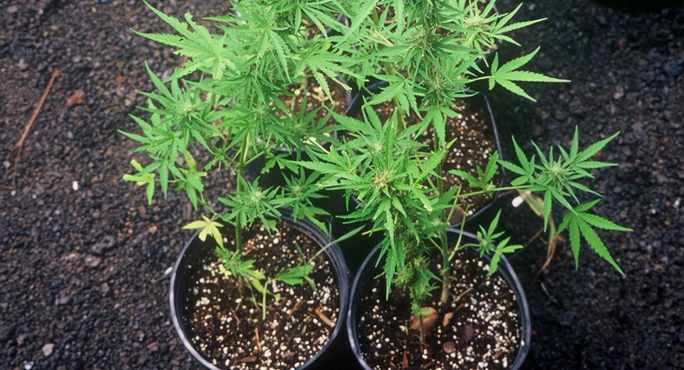
Cannabis. Photo by: Chris Kilham © 2008
Are they confused in Washington, D.C., or just deceptive? That is the burning question. You be the judge. According to the U.S. Drug Enforcement Agency “The FDA noted “that no sound scientific studies supported medical use of marijuana for treatment in the United States, and no animal or human data supported the safety or efficacy of marijuana for general medical use.” This statement was released to the general public after the Feds filed a patent on pot, to corner the market on many of its medicinal uses.
As virtually everyone who has had access to the media will tell you, U.S. drug enforcement officials stand by the notion that there is no medicinal value to marijuana. Yet when cameras shut off and microphones have been put away, our government has quietly worked to profit on future marijuana medicines.
Consider U.S. patent #6,630,507, entitled Cannabinoids as antioxidants and neuroprotectants. Filed in 2001, this patent, which was subsequently granted in 2003, gives us an insight into the canny duplicity that has characterized U.S. government policy toward marijuana. In the patent, assigned to the U.S. Department of Health and Human Services (HHS), the applicants state the following: “Cannabinoids have been found to have antioxidant properties, unrelated to NMDA receptor antagonism. This new found property makes cannabinoids useful in the treatment and prophylaxis of wide variety of oxidation associated diseases, such as ischemic, age-related, inflammatory and autoimmune diseases. The cannabinoids are found to have particular application as neuroprotectants, for example in limiting neurological damage following ischemic insults, such as stroke and trauma, or in the treatment of neurodegenerative diseases, such as Alzheimer’s disease, Parkinson’s disease and HIV dementia.”
To open a copy of
U.S. Patent #6,630,507, click on the image, abve (it will open as a standard PDF file).
Let me sort this out for you. Basically the patent states that cannabinoids, the active compounds in marijuana, show benefits for treating stroke, heart attack, inflammation, and autoimmune disorders, and may be beneficial in the treatment of Alzheimer’s, Parkinson’s and HIV. That’s not bad for a plant with no purported medicinal value.
To bolster their argument for a patent on the effectiveness of cannabinoids against many common, life-threatening diseases, the HHS goes further, citing a list of studies showing that cannabinoids also possess anti-epileptic properties, protect the brain, fight arthritis, and help in cases of glaucoma.
There is a large and ever-growing body of science demonstrating that the active compounds in cannabis possess a multitude of beneficial properties. If you surf PubMed (The National Library of Medicine’s online medicinal database), you will find studies that affirm the antioxidant, anti-inflammatory, and protective properties of pot. And remember, that database is run by the U.S. government. In fairness, there are also studies showing that in some populations, use of cannabis can produce anxiety and imbalanced mood, and can be especially disorienting in cases of schizophrenia. Like any substance, cannabis works for some and not for others.
As of August 3, 2010, a simple search of “cannabis” on PubMed reveals 12,582 published scientific papers on cannabis. Not all of those papers concern positive medicinal benefits of cannabis, but many do.
Ever since the ground-breaking work on cannabis and pain conducted by Dr. William Shaunessy in the late 1800s, cannabis has been increasingly recognized for its medicinal properties. Cannabis aids in the relief of many types of pain, most notably pain associated with multiple sclerosis. Ingestion of cannabis either by inhalation or by eating it improves appetite, and is of value to HIV sufferers, wasting diseases and chemotherapy patients, helping them to eat, put on weight and improve immune function. Cannabis helps with glaucoma (a leading cause of blindness,) by reducing pressure in the eye. Cannabis was once included in the U.S. Pharmacopoeia, and was sold at drug stores. Additional studies show powerful protective properties, and this may lead to the development of a broad variety of cannabinoid-based medicines.
So here is a question. Is it fair and right for the U.S. government to vigorously deny any medicinal benefits of marijuana while they seek profits in filing a pot patent? I personally think that the answer is no. As time goes on, if you want to develop a marijuana medicine for oxidation, inflammation, pain, heart attack, stroke, or neuro-protection, you will be prohibited from doing so because of the “Pot Patent.” And if marijuana medicines emerge for the diseases described above, this will happen under the auspices of that patent, and the Feds will reap the profits.
The debate over cannabis in society has increased in frequency and volume, especially, over the past 20 years. Various laws affecting the cultivation, sale and possession of cannabis have changed. Fifteen states plus the District of Columbia now have medical marijuana laws. A dozen states have decriminalized the possession of small amounts of cannabis. Marijuana is a multi-billion dollar cash crop that plays heavily in the economies of several states, notably California and Hawaii. And the science on cannabis as a beneficial medicine grows steadily, as researchers peer into the chemical soul of this plant and conduct rigorous experiments. Looking ahead, I see broader decriminalization, more medical inquiry into the plant, and eventually a product that is sold and taxed like alcohol and tobacco. Hopefully in the process, marijuana medicines will gain broad distribution, to aid people whose health can be greatly improved by these remedies.
“Much of the prevailing public apprehension about marijuana may stem from the drug’s effect of inducing introspection and bodily passivity, which are antipathetic to a culture that values aggressiveness, achievement, and activity.” – The New Columbia Encyclopedia.

